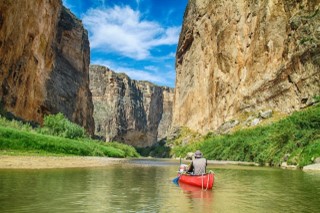Stephen Divito of Rochester is an avid outdoorsman who enjoys the scenic nature of parks around the country. In the following article, Steve Divito of Rochester discusses some camping and hiking trips that should be on everyone's bucket list.
The natural beauty of America’s National Parks is unparalleled. These protected spaces draw more than 300 million visits each year. What’s most spectacular about the national parks is the opportunities available to each visitor.
Steve Divito explains that U.S. national parks are such a draw for many because they contain both amazing trails and gorgeous campsites. Whether visitors stay for only a few hours or a few days they will come away with memories that will last a lifetime.
At each of the major parks across the country, there are great opportunities for both young and old. From hiking to education to camping, the national parks have a lot to offer.
Steve Divito Takes a Look at National Park Camping
Across the national park system, there are
138 different locations that provide camping options. The majority are within the continental U.S. with several located in Hawaii and the Virgin Islands.
These campgrounds vary greatly in access, amenities, and purpose. Some are for RVs only with hookups while others are simply designated areas for tents. Additionally, some parks allow backcountry camping which does not involve developed campsites.
Stephen Divito of Rochester explains that this variety allows for a wide range of camping options. Less experienced campers and those who prefer to camp with creature comforts can car camp or RV camp. More active adventurers can backpack through certain parks and camp along the way.
To facilitate organized camps, the National Park Service (NPS) uses a reservation system during busy months for many campsites. Reservations are typically handled by recreation.gov with links found on the park’s website.
Any campers going backpacking through the backcountry must get a backcountry permit from the nearest visitor center. Stephen Divito says that these permits are free in most cases but allow park rangers to keep track of who is in the backcountry for safety reasons.
Hiking Destinations
Alongside the more than 130 camping locations, the national parks boast
over 21,000 miles worth of trails. Like the camping options, these trails stretch from coast to coast and include trails in Hawaii, Alaska, and the Virgin Islands.
Some parks are open 24/7 for day visits such as hikes but there are some that have specific hours. Usually, the parks with limited hours are historic sites that are staffed. Some parks’ hours are also affected by the season.
The NPS website lists the various trails in a park with their length and notable features so that hikers might plan out their visit. Visitor centers and many trailheads will have paper maps available. Alternatively, the NPS website has downloadable maps for convenience.
Trails are divided by type and designation. There are trails for foot traffic, bikes, or only horses in addition to multi-use trails. Trail designations are based on their main features. Some designations include scenic, historic, and nature trails.
Steve Divito of Rochester says that a few parks also have specific hiking areas that do not have trails. Similar to backcountry camping, some of these areas require checking in with the local visitor center to get a permit. It is worth noting that for any other trails, visitors must keep on the trail and follow Leave No Trace rules.

 Events and Programs
Events and Programs
In addition to natural spaces full of camping and hiking opportunities, the NPS does events and has several great programs.
Stephen Divito of Rochester also says that there is almost always an event going on somewhere in one of the national parks. Many events do not require registration. Events are open to all park visitors though depending on the event there may be space limits.
On the events page of the NPS the time, duration, location, and details are listed and searchable. Quite a large number of the events are repeated every so often so that as many people as possible can experience them.
Types of events include exhibits, chats with rangers, guided (and unguided) walks through the park and more.
Steve Divito of Rochester explains that programs on the other hand include the Junior Ranger program, parks passport, and Teacher Rangers. Both the Junior and Teacher Ranger programs help young kids and teachers learn more about the parks.
The parks passport program allows kids (and adults too!) to collect stamps for each national park they visit. The passports can be filled with stamps, stickers, and notes about the visit.
Closing Thoughts
All of these options provide amazing opportunities to have fun, relax, and soak in the beauty of nature. There is a lot of fun to be had at the national parks!

 Events and Programs
Events and Programs